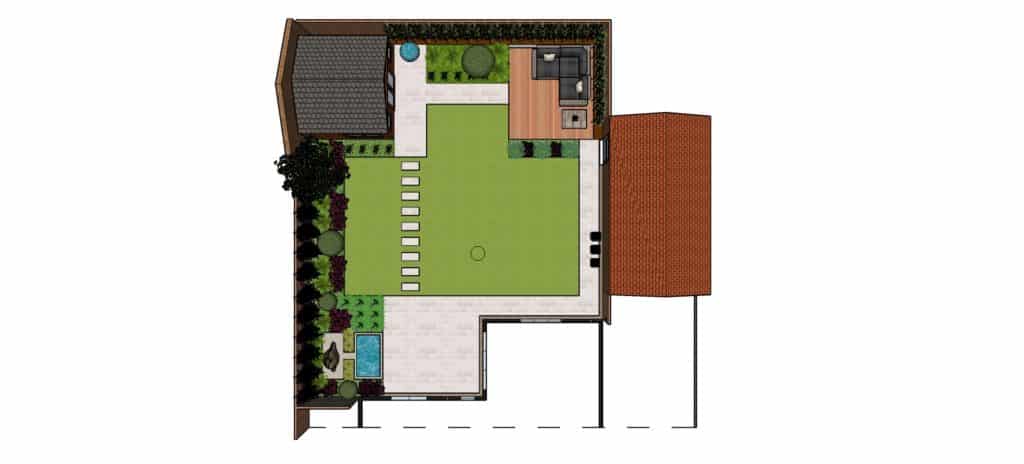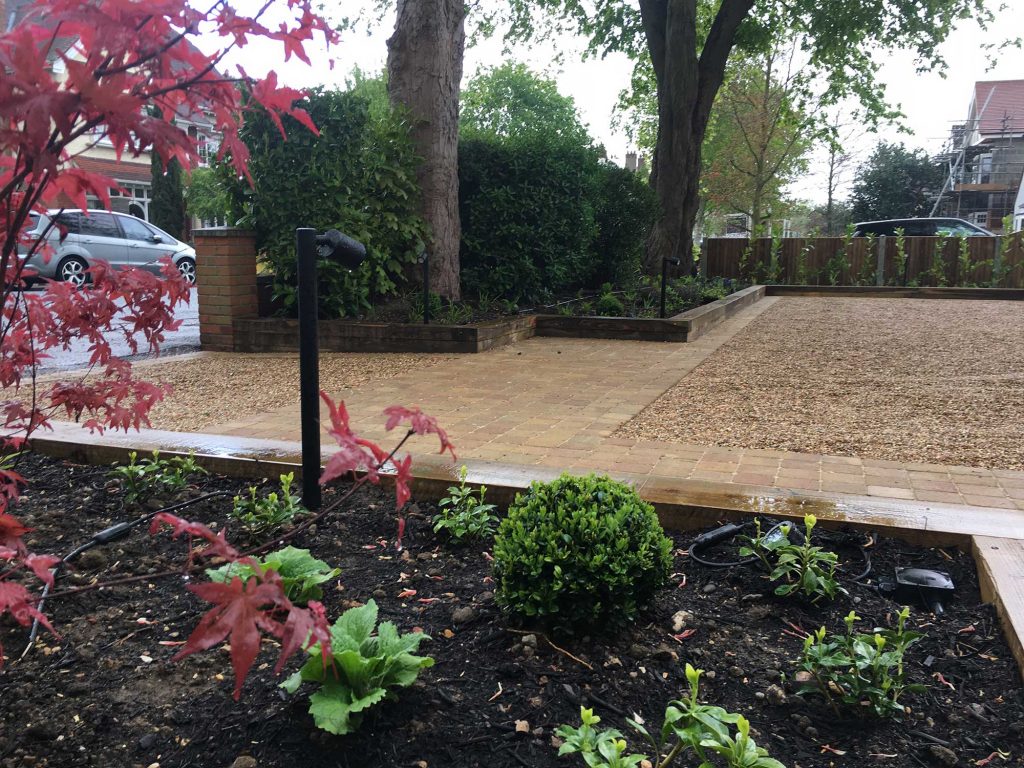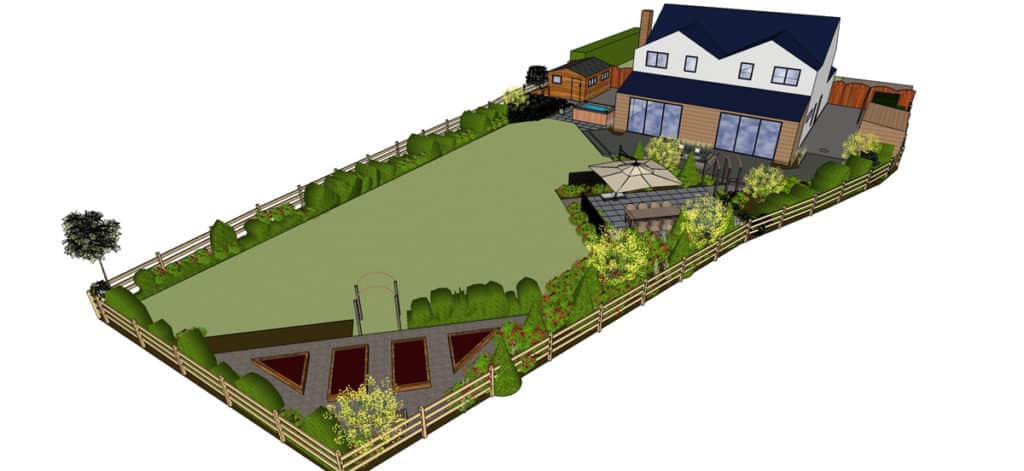29 Jun Garden Designs and Layouts – tips from a garden designer
The layout of your garden will define the way you use it for many years to come. Here are tips from a garden designer on the creating the best garden designs and layouts
Everything in your garden should be about convenience as well as joy. For example, a path that meanders through scented plants is blissful, but do you really want to run around a winding path to retrieve your laundry when the rain starts to fall?
A good garden design ensures that feature in your garden is easily accessible and no part of the space is redundant or boring.
In this design, stepping stones across the lawn break up the space but also create a circular journey around the garden
Features and Functions
Any good garden designer will start a plan by chatting with you about how you want to use your garden. Remember to think about everything – the good, the bad and the ugly.
- What features do you need in your garden? Shed? Bins? Bikes? Barbecue? Veg Patch? Washing line? Play area?
- Where are the sunny spots? The shady spots?
- Which time of day are you most likely to be in the garden?
- Do you have pets or children to consider? (now or in the future)
- Are any parts of the garden overlooked by neighbours?
- Is traffic noise a potential problem?
- What would you like to see (or not see) from your window?
Once you have a list of features, your next job is to plan where they are going to sit in the garden. Should the bins be near the back door or would you prefer them near to the gate? Do you want to hide the shed from view? Where’s the best place for your seating area so that it catches the sun when want to be outdoors.
Just like interior design, the best garden designs and layouts are practical before they are pretty.
How garden designs and layouts can change the size of a garden
I’m fascinated by optical illusions and a good garden designer knows exactly how to create them. Do you have a long narrow garden? Using diagonal likes can make the space seem wider. Is your garden tiny? Tall plants on the far boundary can help it to merge into the surrounding landscape and feel more spacious.
In this garden design, Katie Moyes from Tapestry Design Studios has used circles to bring cohesion to the space and make the long narrow section appear wider
Travelling between garden features
Once a garden designer is happy with the position of each of the garden features, he or she will start to think about how best to join them up.
Garden designs and layouts are all about creating experiences and ensuring that every part of the garden has a function. For example, if your outdoor dining area a long way from the back door, will you really want to keep trotting backwards and forwards with plates, ketchup, drinks etc? So, the journey from the house to the patio needs to be simple.
Are you having an intimate little space where you can enjoy a coffee or a book in relative peace? If so, a pretty little path or a pergola can slow your journey so that you arrive with the right mindset.
For a front garden, how do you want visitors to perceive your home? Uncluttered and orderly? Restful? Or quirky and colourful? Garden designs and layouts really do have a big impact on first impressions.
And then there are practical considerations. Delivery men and women sometimes tend to take the shortest route from your gate to your front door – your garden design needs to ensure they can’t wear a new track across your lawn.
What about your driveway? At what point does the parking space become garden? How easy is it to transport groceries from the car to the kitchen?
Mixing and matching landscaping materials has several advantages. First of all, it looks good. Then of course it defines the function for different areas (in this case parking and pedestrian). It’s also a clever way to manage your materials budget. Ask your garden designer for ideas.
Finally – the styling
To an extent the layout of your garden does define the style. Choosing straight lines or curves, geometric shapes, direct paths or meanders will impact on all the other features. But garden style comes mainly from the materials and plants you choose.
Garden designers make great use of colour and texture when it comes to styling a garden. For a contemporary garden, smooth, clean lines are a must. Perhaps using large pavers (for fewer joints), rendered walls and a simple colour palette.
For a rustic garden, small slabs or setts, timber and joyful planting.
In a large garden, you could choose wide open spaces or you could create smaller, more intimate spaces within it. Each garden room could have a different style and function
3D garden design helps you to visualise the space and how the layout might work for you.
I can certainly picture myself using this garden with friends and family AND for some quality me-time.
Help with garden designs and layouts
You will doubtless spend many hours deliberating over your garden design – there’s a lot to think about. The Tapestry Design Studios blog is full of helpful articles, but there’s no substitute for hiring a garden designer to help you bring your ideas to life. Hiring a garden designer will certainly save you some time and probably avoid some heated discussions in your household too.
If you would like to discuss your garden design ideas, call or email the team at Tapestry Design Studios. We’re here to help.
Contact Tapestry Design Studios









Sorry, the comment form is closed at this time.